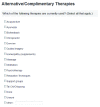Recommendations to enable drug development for inherited neuropathies: Charcot-Marie-Tooth and Giant Axonal Neuropathy
- PMID: 24860645
- PMCID: PMC4023663
- DOI: 10.12688/f1000research.3751.2
Recommendations to enable drug development for inherited neuropathies: Charcot-Marie-Tooth and Giant Axonal Neuropathy
Abstract
Approximately 1 in 2500 Americans suffer from Charcot-Marie-Tooth (CMT) disease. The underlying disease mechanisms are unique in most forms of CMT, with many point mutations on various genes causing a toxic accumulation of misfolded proteins. Symptoms of the disease often present within the first two decades of life, with CMT1A patients having reduced compound muscle and sensory action potentials, slow nerve conduction velocities, sensory loss, progressive distal weakness, foot and hand deformities, decreased reflexes, bilateral foot drop and about 5% become wheelchair bound. In contrast, the ultra-rare disease Giant Axonal Neuropathy (GAN) is frequently described as a recessively inherited condition that results in progressive nerve death. GAN usually appears in early childhood and progresses slowly as neuronal injury becomes more severe and leads to death in the second or third decade. There are currently no treatments for any of the forms of CMTs or GAN. We suggest that further clinical studies should analyse electrical impedance myography as an outcome measure for CMT. Further, additional quality of life (QoL) assessments for these CMTs are required, and we need to identify GAN biomarkers as well as develop new genetic testing panels for both diseases. We propose that using the Global Registry of Inherited Neuropathy (GRIN) could be useful for many of these studies. Patient advocacy groups and professional organizations (such as the Hereditary Neuropathy Foundation (HNF), Hannah's Hope Fund (HHF), The Neuropathy Association (TNA) and the American Association of Neuromuscular and Electrodiagnostic Medicine (AANEM) can play a central role in educating clinicians and patients. Undertaking these studies will assist in the correct diagnosis of disease recruiting patients for clinical studies, and will ultimately improve the endpoints for clinical trials. By addressing obstacles that prevent industry investment in various forms of inherited neuropathies, we can envision treatment options for these rare diseases in the near future.
Conflict of interest statement
Figures












References
-
- Bort S, Sevilla T, Vílchez JJ, et al. : [The diagnosis and prevalence of locus CMT1A duplication in Charcot-Marie-Tooth disease type 1]. Med Clin (Barc). 1995;104(17):648–52 - PubMed
Grants and funding
LinkOut - more resources
Full Text Sources

